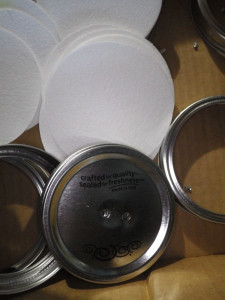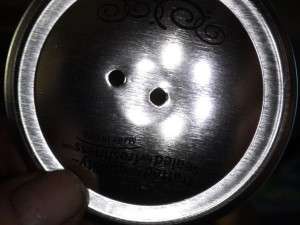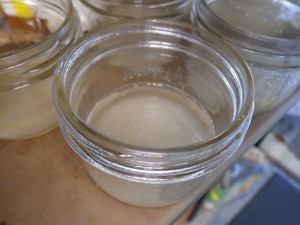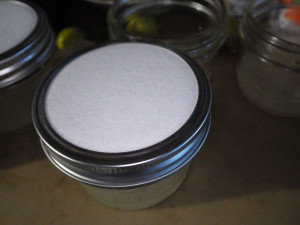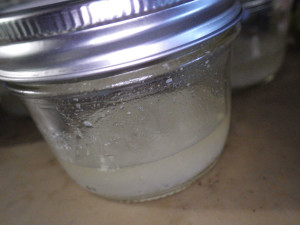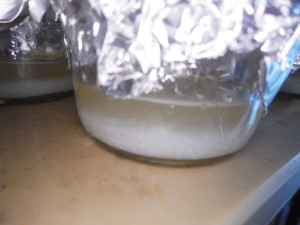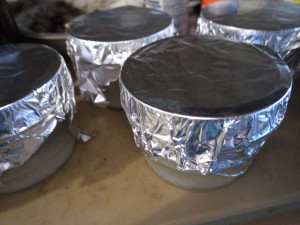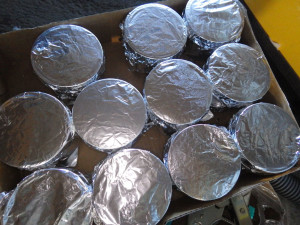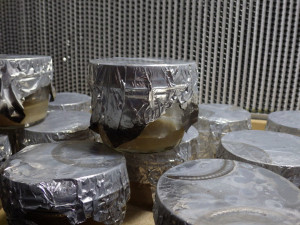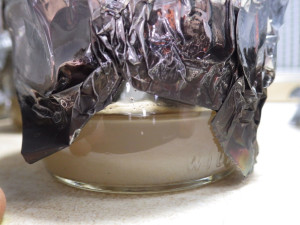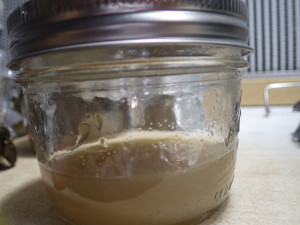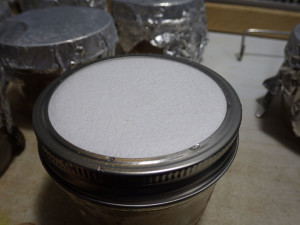Hericium coralloides
[Commonly accepted name but not all users have been in agreement with one another as to what they mean by it.]
Abies alba
Abies borisii-regis
Abies fabri
Abies firma
Abies homolepis
Abies spp.
Acacia dealbata
Acacia melanoxylon
Acacia spp.
Acer negundo
Acer nigrum
Acer platanoides
Acer rubrum
Acer saccharum
Acer saccharinum
Acer spp.
Agathis australis
Alnus glutinosa
Alnus incana
Alnus japonica
Alnus spp.
Alnus tenuifolia
Archontophoenix cunninghamii
Argyrodendron actinophyllum
Beilschmiedia tawa
Betula alba
Betula alleghaniensis (sometimes as synonym Betula lutea)
Betula papyrifera
Betula pendula
Betula sp.
Carpinus betulus
Carpinus spp.
Carya spp.
Corylus sp.
Cupressus sp. ?
Dacrydium cupressinum
Eucalyptus campanulata
Eucalyptus regnans
Eucalyptus spp.
Fagus crenata
Fagus grandifolia
Fagus orientalis
Fagus spp.
Fagus sylvatica
Fuscospora fusca [formerly Nothofagus fusca]
Fraxinus excelsior
Fraxinus spp.
Juglans sp.
Knightia excelsa
Maytensus sp.
Metrosideros robusta
Morus alba
Morus spp.
Nothofagus cunninghamii [now = Lophozonia cunninghamii ]
Nothofagus menziesii [now = Lophozonia menziesii]
Nothofagus solandri [now = Fuscospora solandri]
A Nothofagus species. Either N. solandri or N. truncata [the latter now = Fuscospora truncata]
Nothofagus spp.
Notholithocarpus densifolia
Nyssa sylvatica
Picea abies
Picea engelmannii (?)
Picea glauca
Picea spp.
Pinus sylvestris
Populus balsamifera
Populus papyrifera
Populus spp.
Populus tacamahaca
Populus talassica
Populus tremula
Populus tremuloides
Populus trichocarpa
Pyrus sp.
Quercus agrifolia
Quercus cerris
Quercus coccifera
Quercus dilata
Quercus douglasii
Quercus garryana
Quercus leucotrichophora
Quercus liaotungensis
Quercus mongolica var. grosseserrata
Quercus pubescens
Quercus robur [now = Quercus pedunculata]
Quercus serrata
Quercus sp.
Salix spp.
Sloanea woollsii
Sophora japonica [now = Styphnolobium japonicum]
Sorbus aucuparia
Tilia cordata
Tilia spp.
Tsuga heterophylla ?
Tsuga sieboldii
Ulmus spp.
Weinmannia racemosa
Also reported to be found growing on:
an unidentified tree-fern frond (VIC)
an unidentified podocarp (NZ)
a Ganoderma fruiting body (NZ) (?)
N.B. (with caution)
the claims for:
Deciduous trees only.
Conifers only.
“exclusively on deciduous wood” Harrison 1973 (as H. ramosum).
Exclusively on softwood. Maas Geesteranus 1959.
“grows only on deciduous wood, usually poplar.” Henderson 1981.
“in northwestern Europe […] grows almost exclusively on hardwoods.” Kotiranta & Niemelä 1988.
In the list that follows, hardwoods will be seen to predominate. Softer wood species will also be noticed.
Hericium coralloides reported as occurring on Abies, Picea, Tsuga and other softwoods merit a closer examination to establish if these were misidentifications or if they are simply less common occurrences; or in some cases perhaps a new taxa deserves delineation.
Abies alba (silver fir) Yurchenko 2002 (Belarus); Global Catalogue of Microorganisms (Czech Republic & Yugoslavia). [Ed.: was this H. alpestre?]
Abies borisii-regis (Bulgarian fir) “on” Zervakis et alia 1998 (Greece). [Ed.: was this H. alpestre?]
Abies fabri (Yunnan fir) “Decay” Chen 2003 (Tibet, China).
Abies firma (Momi fir) Kobayashi 2007 (Japan) (as H. ramosum).
Abies homolepis (Nikko fir) Kobayashi 2007 (Japan) (as H. ramosum).
Abies sp. (fir) ATCC (Yugoslavia). [Ed.: was this H. alpestre?]; Teng 1996 (China); Kobayashi 2007 (Japan) (as H. ramosum); “On decayed” Berkeley 1860 (UK); Jussieu ex Barrelier 1714:118 (as Fungus ramosus], Pollini 1824 and also Micheli 1720:122 (all 3 Italy). Rastetter 1983 seems also likely to be H. alpestre?
Abies spp. (firs) “White rot” Chen 2003 (Tibet, Sichuan, China)
Acacia dealbata (silver wattle) “dead log” ALA (Victoria, Australia).
Acacia melanoxylon (blackwood) “Blackwood stump, with leaves growing from the stump” ALA (Tasmania, Australia); “Fern gully […] on standing dead”, “a gully […] inhabiting a rotten, fallen blackwood”, “in a fissure in trunk”, “on stump” ALA (Victoria, Australia).
Acacia spp. (wattles) “fallen wattle tree” ALA (Tasmania, Australia); “fallen log (hanging from)” ALA (New Zealand); “On rotting Acacia log” ALA (Victoria, Australia).
Acer negundo (black maple) wood rot Anonymous 1960 (ne USA); possibly also the americanum in Day & Nair ND (Wisconsin).
Acer nigrum (boxelder) wood rot Anonymous 1960 (ne USA); possibly also the americanum in Day & Nair ND (Wisconsin).
Acer platanoides (Norway maple) Yurchenko 2002 (Belarus).
Acer rubrum (red maple) wood rot Anonymous 1960 (ne USA); possibly also the americanum in Day & Nair ND (Wisconsin).
Acer saccharinum (silver maple) wood rot Anonymous 1960 (ne USA); possibly also the americanum in Day & Nair ND (Wisconsin).
Acer saccharum (sugar maple) wood rot Anonymous 1960 (ne USA); ; possibly also the americanum in Day & Nair ND (Wisconsin); “sporophores growing from an old log”, also found on living. Nordin 1954 (Ontario, Canada) (as H. laciniatum); Pilley & Trieselmann 1969 (BC, Canada) (as H. ramosum).
Acer rubrum (red maple) wood rot Anonymous 1960 (ne USA); Grand 1985 (North Carolina) (as H. ramosum).
Acer sp. (maple) or Fagus sp. (beech) Ginns 1984 (Virginia).
Acer sp. (maple) USDA ARS GRIN cited BPI (New York) (as H. ramosum).
Agathis australis (kauri) “fallen log” This is a conifer. ALA (6 finds from New Zealand: all were submitted as Hericium sp.)
Alnus glutinosa (common alder) “fallen wood” Yurchenko 2002 (Belarus).
Alnus incana (grey alder) Safonov 2014 (Orenburg Oblast, Russia).
Alnus japonica (East Asian alder) Kobayashi 2007 (Japan) (as H. ramosum).
Alnus sp. (alder) was mentioned as a host in Harrison 1973 (Oregon) and in Nikolaeva 1961 (Russia).
Alnus tenuifolia (mountain alder) “white rot of logs, Uncommon.” Kimmey & Stevenson 1957. (Alaska) (as H. laciniatum).
Archontophoenix cunninghamii (Bangalow palm) “Host in contact with soil, fallen, dead, rotten [trunk]” ALA (Queensland, Australia).
Argyrodendron actinophyllum (black booyong) “Dead wood from fallen” ALA (Queensland, Australia).
Beilschmiedia tawa (tawa) “standing dead stump”, “wood”, “large fallen rotting log” ALA (New Zealand).
Betula alba (silver birch) Ginns 1985 (Sweden).
Betula alleghaniensis (yellow birch) Magasi 1966 (Canada). (as H. ramosum) (as Betula lutea).
Betula papyrifera (white birch) “White rot in wood of down dead trees. Uncommon.” Kimmey & Stevenson 1957 (Alaska); “wounded, live tree” Volk et alia 1994 (Alaska) (as H. ramosum) (HHB-12735-sp); Brambilla & Sutton 1969 (Manitoba, Canada) (Both as = H. laciniatum); McArthur 1966 (Alberta, Canada) (as H. laciniatum); Conners 1967 (Nova Scotia) (as H. ramosum).
Betula pendula (white birch) Cybertruffle’s Robigalia citing Astapenko & Kutafyeva 1990 (Russia) (as = H. clathroides).
Betula sp. (birch) “on rotting” Ginns 1985 (Michigan); Lowe 1969 (BC, Canada) (as H. ramosum); Conners 1967 (Canada); “Collected on end of a beech log” Harrison 1961 (Nova Scotia); “Growing on a birch chopping block” Mackay 1904 (Nova Scotia); Hermansson 1997 (Russia); “windfall” Global Catalogue of Microorganisms (Serpukhov District, Russia); Cybertruffle’s Robigalia (4 collections in Russia); “dead unfallen”, “on stump” Yurchenko 2002 (Belarus); Mycology.su (Russia and Western Siberia); Kobayashi 2007 (Japan) (as H. ramosum).
Carpinus betulus (common hornbeam) Yurchenko 2002 (Belarus).
Carpinus sp. (hornbeam) or Fagus sp. (beech) Ginns 1984 (UK).
Carya sp. (hickory) “grows from dead wood” “on a dead hickory” Coker 1918 (North Carolina, USA) (as Manina flagellum).
Cupressus sp. (cedar) ? see Pollini 1824 (Italy).
Corylus sp. (hazelnut) Koski-Kotiranta & Niemelä 1988 (Central Europe).
Dacrydium cupressinum (rimu) “well rotted podocarp” ALA (New Zealand). This is a conifer.
Eucalyptus campanulata (New England blackbutt) “under” ALA (Queensland, Australia).
Eucalyptus regnans (mountain ash) “Inside a hollow of a mountain ash tree”, “riparian vegetation […] on top of fallen rotting log [host ID questioned]”, ‘on mountain ash trunk” “seen at two locations” ALA (Victoria, Australia).
Eucalyptus spp. (gum trees) “On dead fallen Eucalypt”, “Living Eucalyptus species” ALA (Victoria, Australia); “living eucalypts”, “on living eucalypt”, “base of eucalyptus tree” ALA (Tasmania, Australia). [1 possibly E. obliqua]
Fagus crenata (Japanese beech) Kobayashi 2002 (Japan) (as H. ramosum).
Fagus grandifolia (American beech) “wood decay” Ellett 1989 (Alaska); Magasi 1966 (Canada)(as H. ramosum); Wehmeyer 1950 (Nova Scotia) (as H. laciniatum); “usually on dead trunks, sometimes on living trees” Anonymous 1960 (Maine, New York, Vermont, West Virginia) (as both H. coralloides and H. laciniatum) (Possibly suggesting the former referred to H. americanum? All of the coralloides in Pilley & Trieselmann 1966 have been placed there as well.)
Fagus orientalis (oriental beech) Cybertruffle’s Robigalia (unclear if Georgia or Ukraine) [as = H. alpestre forma caput-ursi]; also mentioned in Doğan et alia 2005 (Turkey) See comments below.
Fagus sp. (beech) “On decayed” Berkeley 1860 (UK); “stump” Lacheva 2014 (Bulgaria); Pollini 1824 & Micheli 1720:122 (Italy); Bourdot & Galzin 1927 (France); Ginns 1985 (Denmark); “on fallen trunk” Ginns 1985 (Sweden); Hallenberg 1983 (Denmark, France, Sweden, Yugoslavia); Abrego et alia 2017; Domanski et alia 1960 (Poland); Harrison 1961 (Nova Scotia) (as H. ramosum); “on trunks or logs, often on beech” Groves 1981 (Canada); preferred host given in Banker 1906 (USA & Canada; as H. laciniatum); Anonymous 2014 (Alaska). Arnold 2001 proposed Hericium coralloides as an indicator species for undisturbed beech forests.
Fagus sylvatica (European beech) ATCC (Denmark); Bisko et alia 2016 (near Nijmegen, Netherlands); Boddy et alia 2011 (UK); “on” Zervakis et alia 1998 (Greece); Stalpers 1992 (Ostrava, Czechoslovakia); “on old trees” (as H. ramosum) Domański et alia 1960 (on the slope of Szeroka Wierch, SE Poland); Dudka et alia 2004 (Ukraine); Cybertruffle’s Robigalia (7 records from Ukraine).
Fraxinus excelsior (European ash) Boddy et alia 2011 (UK); Yurchenko 2002 (Belarus); also mentioned at the Global Fungal Red List.
Fraxinus sp. (ash) Ginns 1986 (Canada); Bourdot & Galzin 1927 (France); “On decayed” Berkeley 1860 (UK); also mentioned in Hampshire Biodiversity Partnership 2003 (UK); Cybertruffle’s Robigalia (1 record from Georgia).
Fuscispora fusca (red beech) “large old log” ALA (New Zealand).
Ganoderma (?) Reported to have occurred on a Ganoderma fruiting body. Most likely the perception of the Ganoderma being the actual host was not accurate. It seems more probable that they were sharing the same host and became intimately associated. Also reported associated on a single host with Ganoderma. ALA (NZ); H. coralloides was reported to have been found sharing the same host with Ganoderma and in one case this was noted as following it. ALA (Tasmania, Australia).
Juglans sp. (walnut) Bourdot & Galzin 1927 (France); Monica 2014 includes, as H. erinaceus, an image that appears to be H. coralloides (Italy).
Knightia excelsa (rewa-rewa) A specimen from Colenso: Hooker 1867:611 (Hooker doubted the ID due to an ash-grey color but this is a color that can occur when old or infected with mold); “standing and fallen”, “fallen rotten wood” ALA (New Zealand).
Maytensus sp. Hallenberg et alia 1983 (Argentina).
Metrosideros robusta (northern rātā) ALA (New Zealand).
Morus alba (white mulberry) Pollini 1824 (Italy).
Morus sp. (mulberry) Bourdot & Galzin 1927 (France); also mentioned in Persoon 1794:151 “Quercum, etiam ad Fagos et Abietis, et in Italia ex Batarra […], in Ulmis et Morus provenit.”; Micheli 1720:122 (Italy); Kotiranta & Niemelä 1988 (central Europe).
Nothofagus cunninghamii (myrtle beech) “dead”, “rotten trunk”, “on fallen branches”, “on tree” ALA (Victoria, Australia); “dead tree” ALA (Tasmania, Australia).
Nothofagus menziesii (silver beech) “well rotted standing dead wood”, “very wet rotted log” ALA (New Zealand).
Nothofagus solandri (black beech) “rotten wood” Atlas of Living Australia (New Zealand).
Nothofagus sp. (unclear if black or hard beech) (i.e. respectively Nothofagus solandri var. solandri or Nothofagus truncata) “rotten stump” ALA (New Zealand).
Nothofagus spp. (southern beeches) “dead tree”, “standing dead tree” , “dead stump”, “spotted on a damp tree stump” ALA (Victoria, Australia & New Zealand); “typical of dead wood although sometimes also recorded on living trunks” McKenzie et alia 2000 (New Zealand) (as H. clathroides).
Notholithocarpus (formerly Lithocarpus) densifolia (tan-oak) Common on dropped limbs, fallen trunks, on dead standing trees, inside hollows (as both growth forms). Very rarely on the dead tissue of a large live tree.
Local observations by Trout (Mendocino Co. California, USA); Chen 2003 notes a 1934 collection by Metcalf from Willits.
Nyssa sylvatica (tupelo) “on decayed log” Van Hook 1922 (Indiana, USA) (as Hydnum caput-ursi). [Ed.: was this a H. americanum?]
Picea abies (Norway spruce) Cybertruffle’s Robigalia citing Burova 1968:363. (1 record from Russia). [Ed.: was this H. alpestre?]
Picea engelmannii (Engelmann’s spruce) Ginns 1986 (Canada) [Ed.: was this H. abietis?].
Picea glauca (white spruce) Brambilla & Sutton 1969 (Manitoba, Canada) (as H. laciniatum) [Ed.: was this H. abietis?]; Conners 1967 (BC, Canada) [Ed.: was this H. abietis?]; McArthur 1966 (Alberta, Canada) (as H. laciniatum); Conners 1967. (Alberta, Canada) (as H. ramosum).
Picea sp. (spruce) Lowe 1969 (BC, Canada) (as H. ramosum) Noted as rare host; DAVFP (BC, Canada). [Ed.: Were these H. abietis?]
Pinus sylvestris (scots pine) “on trunk of supposedly living” Yurchenko 2002 (Belarus). [Ed.: H. alpestre?]
Podocarpaceae (these are conifers). Not identified beyond family. “dead standing tree” ALA (New Zealand).
Populus alba (white poplar) Haller 1768 (Sweden) [as = Echinus ramosus].
Populus balsamifera (balsam poplar) Specimen AKMC 1016. Chen 2003 (Alaska); Brambilla & Sutton 1969 (Manitoba, Canada) (as H. laciniatum); Callan 1998 (BC, Canada); McArthur 1966 (Alberta, Canada) (as H. laciniatum); “Associated with a white rot” Gilbertson & Lombard 1976 (Minnesota) (as H. coralloides. It is possible this should be moved to americanum CHECK RLG 9766.
Populus spp. Lowe 1969 (BC, Canada); Brambilla & Sutton 1969 (Manitoba , Canada).
Populus sp. (poplar) Lindsey & Gilbertson 1978 (USA); Anonymous 1960 (northwestern USA) (as H. americanum); Shaw 1973 (Washington) (as H. americanum); Lowe 1969 (BC, Canada) (as H. ramosum); DAVFP (BC, Canada); Ginns 1985 (Ontario, Canada); BVN 2009 (Alberta, Canada) (as H. ramosum); “Decay” Chen 2003 (Xinjiang, China); Hermansson 1997 (Russia); Cybertruffle’s Robigalia citing Safongy 1999:79. (1 record from Russia); Mycology.su (Russia and Western Siberia); Sterbeeck 1675:254-255 (Netherlands).
Populus tacamahaca (black cottonwood) Brambilla & Sutton 1969 (Manitoba, Canada) (as H. laciniatum).
Populus talassica (命叶杨 / mi ye yang) “Decay” Chen 2003 (Xinjiang, China).
Populus tremula (quaking aspen) Ginns 1985 (Sweden); Cybertruffle’s Robigalia citing Astapenko 1990:290. (1 record from Russia) [as = H. clathroides].
Populus tremuloides (trembling aspen) Basham 1958 (Ontario, Canada); Brambilla & Sutton 1969 (Manitoba, Canada); Brambilla & Sutton 1969 (Manitoba, Canada) (as H. laciniatum); Callan 1998 & DAVFP (BC, Canada); Conners 1967 & Lowe 1969 (BC, Canada) (as H. ramosum).
Populus trichocarpa (black cottonwood) “wood rot, chiefly of logs” Anonymous 1960 (northwestern states); Cash 1953 (Alaska) (as H. laciniatum and as H. coralloides); “log” Volk et alia 1994 (Alaska) (as H. ramosum) (HHB-12700-sp); Callan 1998 (BC, Canada); Thomas & Podmore 1953 (BC, Canada) (as H. laciniatum); DAVFP (BC, Canada); Lowe 1969 (BC, Canada) (as H. ramosum); “decay in” “on decorticated windfall” Ginns 1985 (BC, Canada). Most common host species in BC collections. DAVFP included a collection of “americanum” from BC, Canada on this substrate). It seems reasonable to suspect it was a coralloides; Ziller 1957 (BC, Canada); Ziller 1961 (BC, Canada) (as H. laciniatum); Conners 1967 (BC, Canada & Alaska) (as H. ramosum/laciniatum); Basham 1958 (Ontario, Canada) (as H. laciniatum).
Pyrus sp. (pear) Kotiranta & Niemelä 1988 (central Europe).
Quercus agrifolia (coast live oak) Anonymous 1960 & French 1989 (California)
Quercus cerris (Turkey oak) “on coarse woody debris” Urban 2015 (Austria).
Quercus coccifera (kermes oak) Micheli 1720:122 (Italy).
Quercus dilatata (tilonj) “on dead parts of trunk” Sultana & Qreshi 2007; Ahmad & Khali 1997 (both Pakistan) (both as H. ramosum).
Quercus douglasii (blue oak) French 1989 (California).
Quercus kelloggii (black oak) French 1989 (California) (as H. ramosum).
Quercus garryana (garry oak) Lowe 1969 (BC, Canada) (as H. coralloides); DAVFP included a collection of “americanum” from BC, Canada on this substrate) It seems reasonable to suspect this was coralloides.].
Quercus leucotrichophora (banj oak) “trees and fallen wood” Karun & Sridhar 2016 citing Zutshi & Gupta 2013 (Jamma & Kashmir, India); “Dead tree” Karun & Sridhar 2016 citing Thind & Khara 1975 (Himchal Pradesh, India) [as = Q. incana]; Cybertruffle’s Robigalia (India) [as = Q. incana].
Quercus liaotungensis (Liaotung oak) Chen 2003 (Shanxi, Liaoning, China) (As H. caput-medusae.)
Quercus mongolica var. grosseserrata (Mongolian oak) Kobayashi 2002 (Japan) (as H. ramosum).
Quercus petraea (sessile oak) Yurchenko 2002 (Belarus); Dudka et alia 2004 (Ukraine); Cybertruffle’s Robigalia (Ukraine).
Quercus pubescens (downy oak) Cybertruffle’s Robigalia (Ukraine).
Quercus robur (European oak) “on decaying trunk” Ginns 1985 (Sweden); “on fallen wood” Yurchenko 2002 (Belarus); ALA (Swrcow, Mahrisch-Weisskirchen, Czech Republic).
Quercus serrata (konara) Kobayashi 2002 (Japan) (as H. ramosum).
Quercus sp. (oak) Teng 1996 (China)
Salix sp. (willow) Ginns 1985 (Ontario, Canada); Specimen AKMC 1014. Chen 2003 (Alaska); Kobayashi 2002 (Japan) (as H. ramosum).
Sloanea woollsii (yellow carabeen) “Wood, stag buttress 250 cm diam. and roots” ALA (Queensland, Australia)
Sophora japonica (Japanese pagoda tree) Cybertruffle’s Robigalia (2 records from Ukraine) [1 as = Hericium coralloides; the other as Hericium sp.].
Sorbus aucuparia (rowan) “A wound parasite entering large open wounds on hardwood trees.” Spaulding 1961 (Norway).
Tilia cordata (little-leaf tilden) Cybertruffle’s Robigalia citing Burova 1968:363. (Russia); Kotiranta & Niemelä 1988 (Europe).
Tilia sp. (tilden) Russian Red Book Plants (Russian Federation).
Tsuga heterophylla (western hemlock) DAVFP (BC, Canada). [Ed.: H. abietis?]
Tsuga sieboldii (Southern Japanese hemlock) Kobayashi 2002 (Japan) (as H. ramosum).
Ulnus spp. (elm) Bourdot & Galzin 1927 (France); also mentioned in Hampshire Biodiversity Partnership 2003 (UK) and Mycology.su (Russia).
Weinmannia racemosa (kāmahi) ALA (New Zealand).
“Outside of Belarus [reported] from Populus, Salix [willow], Sorbus [mountain-ash], Tilia [tilden], and Ulmus [elm].” Yurchenko 2002.
“Inhabiting big-size fallen wood, dead unfallen trunks and large branches, stumps; sometimes […] in trunk holes” Yurchenko 2002 (Belarus)
“Large stems of hardwood, especially beech” Hansen & Veesterholt 2002 (Denmark).
“Fallen decayed trunks of Fagus sylvatica and other deciduous trees, and exceptionally on Abies” Hallenberg 1983 (Sweden) (as = H. clathroides).
On Morus alba, and “on beech [Fagus], fir [Abies], cypress [Cupressus]” “ad Fagos, Abietes, Ilices” Pollini 1824 (Italy).
“Standing dead trunks, fallen trunks and larger branches” Boddy et alia 2011 (UK).
“On angiosperm wood” Stalpers 1992 (Epping forest, England).
“Logs on ground. Mostly Beech, also on Fraxinus and Ulnus” Hampshire Biodiversity Partnership 2003 (UK).
“Beech wood” Wald et alia 2004.
“Decayed fir, beech, ash, birch, and oak trunks.” Rea 1922.
“Common in Iowa on dead logs of frondose species” Miller 1935. (Iowa) (as = Hericium laciniatum/coralloides).
“On beech and hickory logs” Banker 1906 (Canada and USA: NY to CA) (as = Hericium laciniatum/ramosum).
The most common host genus [in Scandinavia] is Betula (64.3%) [Norway 30%; central & northern Sweden 41.8% and Finland 75.2%], followed by Populus, predominately tremula, (18.1%) [Norway 40%; Sweden 23.6% and Finland 14.5%];
“In Denmark the commonest host tree is Fagus sylvatica, and only one find from Betula was reported by Knudsen and Pedersen (1984). The Norwegian hosts were Betula sp., Populus tremula and Sorbus aucuparia, in this order. In [southern] Sweden, 21.8% of the collections derived from Fagus sylvatica;
“Collections also exist from Acer platanoides, Alnus sp., Populus tremula, Ulmus sp., Salix sp. and Tilia cordata. In two Swedish collections, Abies was indicated as the host, but samples of the wood were lacking and it was impossible to confirm the determination; these collections also represented H. coralloides in the present sense.” (Sweden);
Additional Scandinavian collections were reported on Acer platanoides, Alnus incana & Alnus glutinosa, Betula pubescens & Betula pendula, Populus balsamifera, Salix spp, Tilia cordata & Ulmus sp.;
“These records indicate that in northwestern Europe H. coralloides grows almost exclusively on hardwoods;
“In Central Europe H. coralloides favours Fagus sylvatica, but has also been reported from the genera Betula, Carpinus, Corylus, Fraxinus, Juglans, Morus, Pyrus, Quercus and Ulmus.”
Kotiranta & Niemelä 1988.
“Woody plants (live trees, bark and dead wood).
It grows on the stumps and dead trunks of deciduous trees, mainly birch, rarely beech, elm, alder, oak, linden, aspen, in mixed and deciduous, occasionally coniferous forests.” [citing Nikolaeva 1961].
In Western Siberia, it is found mainly on [..] small-leaved species (birch, aspen).” [possibly drawn from Red Book of the Novosibirsk region 2018?]
Russian Red Book online (Mycology.su).
“Most commonly on Acer spp., frequent on Fagus and Betula, single collections on Ulmus, Carya, and Fraxinus. It is the only species seen on cottonwood and aspen (Populus spp.) in the west. Single collections on Alnus (Oregon) and live oak (California), and in Alaska on Betula and Populus.” Harrison 1973 (as Hericium ramosum).
“Grows on stumps and trunks of dead hardwoods, mainly birch, rarely beech, elm, alder, oak, linden [Tilia sp.], aspen […] occasionally in conifer forests” Russian Red Book; Plants (Russian Federation).
“On decayed wood, fir, beech, &c.” Massee 1892 & Stevenson 1886 (England).
“Decayed log” ATCC (UK).
“Hardwood logs” Ostry et alia 2011.
“upon oak and other trees” Gray 1821:652 (UK).
“dans les fentes des vieux arbres et sur les vieilles poutres” [in the fissures of old trees and on old logs] Chevalier 1826:279 (France) (merges coralloides and ramosum).
“on the oldest tree trunks, and mainly on oaks.” Letellier 1826.
“On la trouve sur plusieurs sortes d’arbres, sur-tout sur le chêne en France, en Italie & en Allemagne” Paulet 1793:427.
“Fruits from dead hardwood logs and stumps,” “Saprobic and possibly parasitic…typically fruiting from fallen hardwoods branches and stumps, but very rarely reported from the wounds of living hardwoods (perhaps as a result of misidentification)” Kuo website.
“Grows only on deciduous wood, usually poplar.” Henderson 1981.
“On hardwood logs” Mycoweb (California) (as H. ramosum).
“Grows on prostrate trunks of trees of various kinds.” Hyams 1900 (North Carolina, USA).
“On dead standing hardwood.” BCRC (Taiwan) (as H. ramosum).
“Grows in damp areas on dead wood from native and introduced trees” (9:20), “on dead wood such as native and exotic logs and stumps.” “normally found on damp decaying wood in sheltered locations.” (4:227) Hubregtse 2018 (Australia).
Substrates described as “dead stumps”, “large logs”, “fallen dead very rotten trunk” Atlas of Living Australia (Lists 39 records from NSW, Australia; many of which were submitted as H. clathroides.)
“Permanent shade. […] along sides of very wet rainforest trunk on ground”. Substrates described as “on fallen tree leaning up slope”, “on rotting log on a sloping moist, shaded gully”, “on very dead, decorticated log”, “on dead fallen wood”, “on very rotten log”, “rotting stump”, “on dead wood of 6 metre high stump”, “in large tufts on old logs and may be gregarious”, “gregarious on large decaying log” ALA (Lists 34 records from Queensland, Australia; many submitted as H. clathroides.)
“A large mass had formed low down on a living tree trunk, well below the track”. Substrates described as “tall dead trunk”, “upright tall dead trunk”, “on tree trunk”, “standing dead tree”, “near river in deep shade […] standing tree”, “large upright trunk”, “trunk of dead tree”, “on trunk of dead tree 1.5m above ground”, “near river in deep shade […] standing tree”, “wood, trunk”, “on underside of fallen branch of native tree”, “dead log (15cm diameter) which was in ground”, “on dead treefern frond […] not sure of identity”, “wet forest, base of dead standing tree” ALA (Lists 56 records from Victoria, Australia; many submitted as H. clathroides.).
Reported from a variety of cool wet habitats in Tasmania: “Riverine rainforest”, “wet riverine environment”, “Cool temperate mixed forest. The myrtle side of the forest”, “In beech forest”, “Mixed cool temperate forest with Nothofagus cunninghamii and Eucalyptus obliqua”, “Eucalypt rainforest with Nothofagus, laurel, Pomaderris and satinwood”, “Mixed wet forest: Acacia melanoxylon, Nothofagus cunninghamii, Monotoca glauca”, “Mixed cool temperate forest with myrtle” “Cool temperate forest with Eucalyptus, myrtle, leatherwood and native laurel”, “Mixed myrtle, manferns, leatherwood, sassafras”, “wet forest with Sassafras”, , Reported in Huon pine / Nothofagus rainforest, in forests with Nothofagus predominating, commonly reported from “wet sclerophyll” habitat and in “cool temperate mixed forest, dominated by Nothofagus cunninghamii, manferns and sassafras”, “Site was logged many years ago”. Reported substrates were a familiar mix: “Large troup on rotting log”, “fallen log “, “standing dead tree”, “dead tree trunk”, “tree trunk”, “rotting stump”, “stump of a rotting tree”, “very rotten stump”, “tree buttress or stump”, “fallen to ground, decaying”, “magnificent display up entire dead tree trunk”, It was found on several living Eucalyptus. ALA (Lists 162 records from Tasmania, Australia).
Many reports from New Zealand’s beech forests. Substrates described as “dead wood”, “standing stump”, “rotten stump”, “dead trunk”, “rotting tree trunk”, “dead standing tree”, “fallen wood”, “large log”, “rotting log”, “rotten log”, “wet rotted log”, “very rotten log”, “decayed fallen log”, “hardwood log” (in broadleaf podocarp forest), “rotting bark on dead standing trunk”, “bark of living tree”, “tree” (no indication if live or dead). ALA (Lists 67 records from New Zealand; the vast majority as Hericium clathroides. Plus 8 additional records of the same as Hericium sp.).
The reports from New Zealand and Australia need more study to establish if they represent one or two species. The very slender branched and long toothed specimens are quite striking by comparison to the rest.
Colenso 1889 attempted to propose Hydnum novae-zealandiae as a new species; commenting that it was different in form from a single Hydnum laciniatum he had encountered some 40 years earlier. His newer specimen was collected from a Beilschmiedia tawa; which is not uncommonly represented as a host tree in the coralloides/laciniatum collections that are detailed at ALA. He included no illustration but his account is interesting in view of the other collection reports. Colenso considered these to be rare in New Zealand. It might be wondered if the increase of reports in subsequent years was more heavily affected by the impact of New Zealand’s logging industry or the increased frequency of nature-minded forest visitors due to tourism OR if Colenso’s difficulty in finding more specimens in the 19th century perhaps reflected the Maori’s known enjoyment of the fungus as food?
“On decayed fir, beech, ash, &c.” Cooke 1871 United States)
Occurring on Abies (fir) and Picea (spruce). Gobice 2013. [May refer to alpestre/flagellum?]
Log in conifer forest. Thind & Khara 1975 (Jammu-Kashmir, India)
As H. caput-medusae:
“on the dead woods” Letellier 1826;
“On trunks of trees” Cooke 1871 (United States);
“On trunks” Massee 1892 & Stevenson 1886 (England).
Beware of this name as it does not have consistency of application between authorities.
